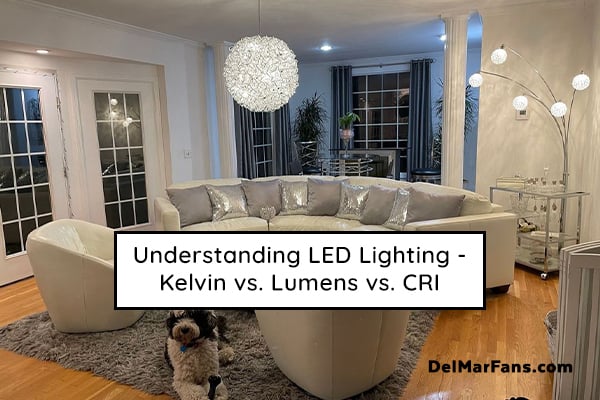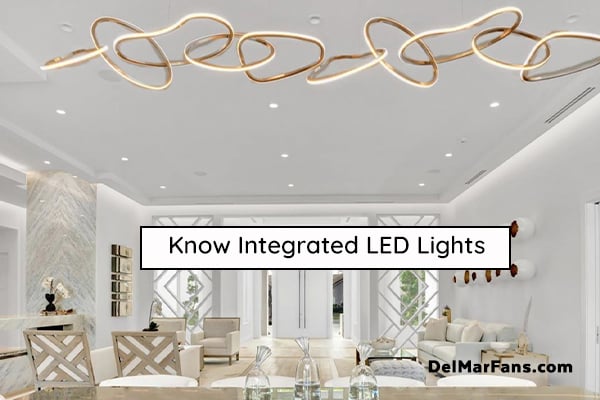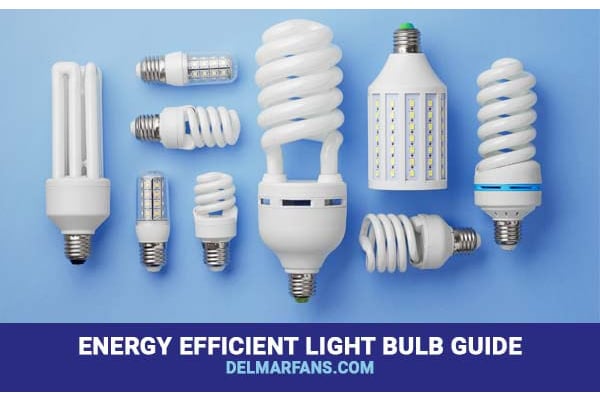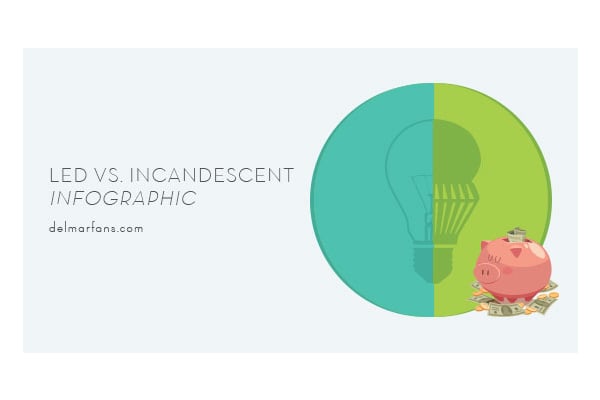
Shopping for LED lighting can be a formidable task given so many options available in the market and limited guidance on which one will serve my purpose.
At DelMarFans.com, we always strive to decode the lighting and fans jargon for you to better understand and make an informed decision to buy just the right fixture that suits your purpose, space, and style.
Coming to LED lighting.
LED (light emitting diodes) luminaires have revolutionalized the lighting industry with their high energy efficiency, extended lifespan, and several hues of white emitted, ranging from warm white light to cool white light. LED is an eco-sensible alternative to other lighting products like incandescent lights, fluorescent lamps, and halogens as it can produce the same brightness (lumens) consuming much lesser electricity (watts). From a buyer’s standpoint, LED may seem expensive at the front, but consider it as an investment that will give you returns in terms of saving your money for decades. An average LED bulb lasts 40,000 hours which means you will need to replace it once in 36 years!
The comparison between incandescent and LED will make you rethink and make your home budget smart.
The different color luminance from LED makes one interesting discussion. Let’s delve into it.
In lighting terminology, the Correlated Color Temperature (CCT) is used to mean how warm (yellow) to cool (blue) the color of light appears to the human eye. This color temperature is measured in degrees Kelvin on a scale of 1,000 to 10,000.
Related to CCT is the concept of Chromaticity:
A chromaticity diagram indicates all the hues that can be perceived by the standard observer for various (x,y) pairs, also the dominant single-frequency wavelengths. Point ‘A’ represents white on this diagram, which corresponds to 6500K (average daylight color temperature).
Chromaticity specifies the hue and saturation, but not the lightness which Luminance specifies.
Let’s simplify it.
Consider how the sunlight changes color during the day. During midday, the color is bright white-bluish (6500K), while at sunset and sunrise, warm amber shades (3500K) rule.
We may not pay attention to it but the light color temperature has an immense impact on our energy levels. We are most alert during the daytime and as the daylight mellows down to the hues of orange and red, we are calmer and feel more relaxed. This forms the fundamental principle of ‘What kind of LED light do I need?’
Low color temperature or Kelvin corresponds to warmer, inviting, and relaxing vibes. Higher Kelvin readings mean intense and energizing white light.
Read this blog to understand the elements of LED light bulbs in terms of Lumens, Color Rendering Index (CRI), Watts, and their relationship with Kelvin.


Correlated Color Temperature (CCT) Lighting Application at Home
For residential purposes, the Kelvin range from 2700K to 5000K is used.
Knowledge of light bulb colors is crucial when deciding the lighting design in the room. You do not want dull light in a grocery shop or bright white LED light glaring in your bedroom after a long busy day! Think about the activity to be done in that space and what mood you want to set in there - these will define what color temperature LED light would suit you. Here are the general guidelines for you to refer to which area and purpose require how much Kelvin.
Warm Color temperature:
2700K to 3000K range on the light color temperature chart on the warm side and in the hues of reds and yellows. Gentle, and comfortable, this range is inviting and exudes relaxing vibes. It complements skin tones and creates a cozy ambiance.
Spaces Recommended for warmer colors: Bedrooms, living rooms, dining room, and hospitality industry.
Moving up, the 3100K - 4000K range varies from soft white to neutral to bright white light color, with the higher end starting to show a slight blue tint. Perfect for visual tasks in spaces where more than warmth in light clarity is important.
Spaces Recommended: Bathrooms, vanity, kitchen, pantry, home office, garage, work areas, and workstation.
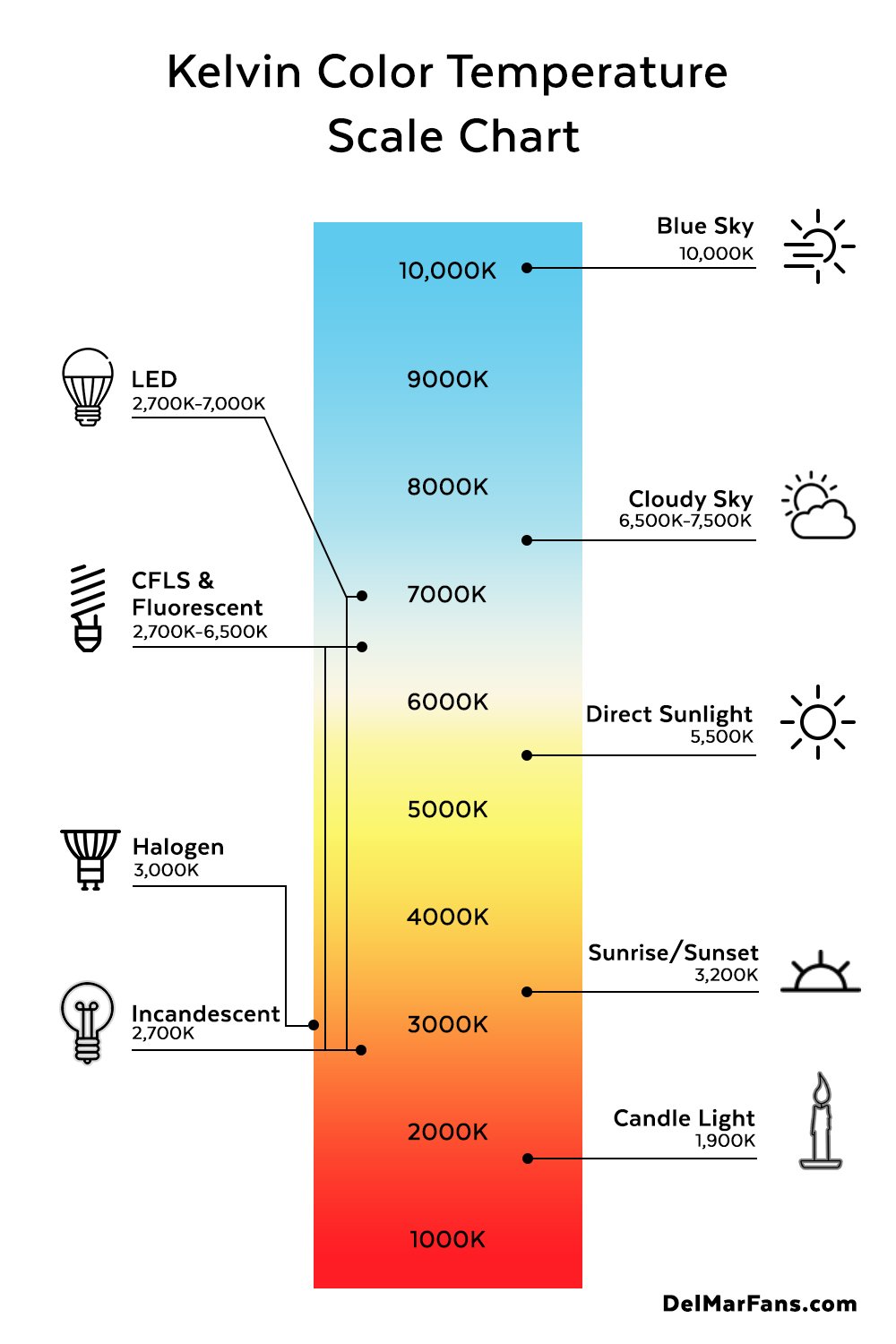

Cool Color Temperature:
4100K - 5000K - When the task in hand requires precision, cool white light is what you want. It is bright, clean, and vibrant. Mostly required for industrial and commercial settings where workers need crisp light to work on intricate details. The 4000K to 4500K range is used for residential outdoor lighting and security lighting.
Spaces Recommended: Grocery stores, professional garages, display areas, and hospitals.
5100K - 6400K - This range has a daylight glow and invokes energizing vibes. Suitable for places where you still require higher accuracy and ultimate clarity when at work.
Spaces recommended: Commercial kitchens, Retail changing rooms, workshops, parking lots, sports stadiums, hospitals, and warehouses.
6500K and higher have an apparent blue tone color appearance and are intense and alert. Best suited for places that demand full illumination.
Spaces recommended: Security, street lighting, large industries, indoor farming, greenhouses, and other agricultural purposes.
Kelvin and Home Décor
The right lighting can make or break your home décor. The color temperature scale or Kelvin must be in consideration of the finishes and color palette of your room. Once your space is furnished, you should stick to one warm white light or cool white light.
Mixing warm and cool colors will ruin the feel of the room.
The warm color temperature (2700K - 4000K) brings out the splendor in the cozy home décor with earthy tones of brown, red, yellow, and wood accents. Perfect for vintage, antique, boho, Tuscan, retro, farmhouse, and tropical-styled homes.
Cooler color temperatures (4100K - 5000K) make greys and blues look amazing. White makes a statement with its sharp appearance. Complements well with modern, contemporary, and minimalist-styled interiors.
It is advisable to use cooler LEDs where sunlight is sufficiently available like in bathrooms and kitchens where it gives a ‘neat’ look. On the contrary, a warm LED here makes a white surface look filthy.
| Bedroom | warm | 2700K - 3000K |
| Living room | warm | 2700K - 3000K |
| Kitchen | variable | 2700K - 4000K 3000K neutral white is failproof |
| Bathroom | cool | 3000K - 4000K |
| Office/Workspace/Garage | cool | 4000K |
To summarize,
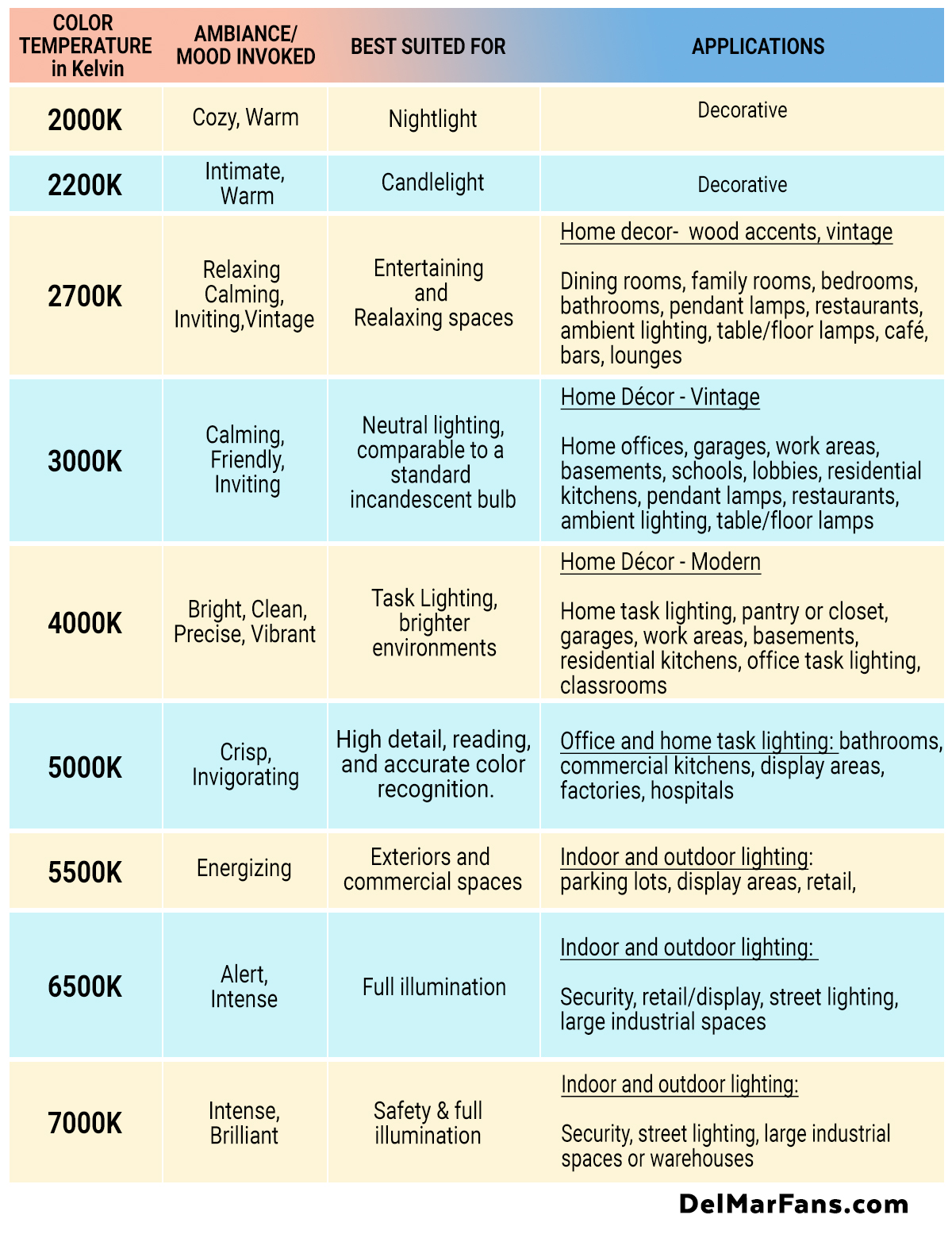

Let us know in the comments if you could find the right LED bulb for your home and office space or call 1-800-724-5501 for assistance.



